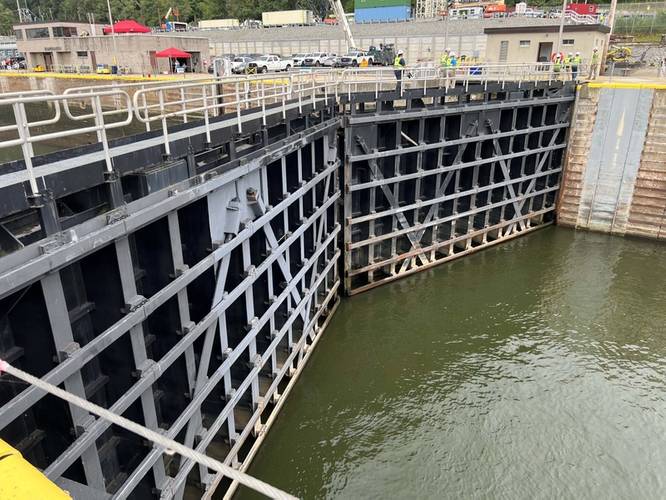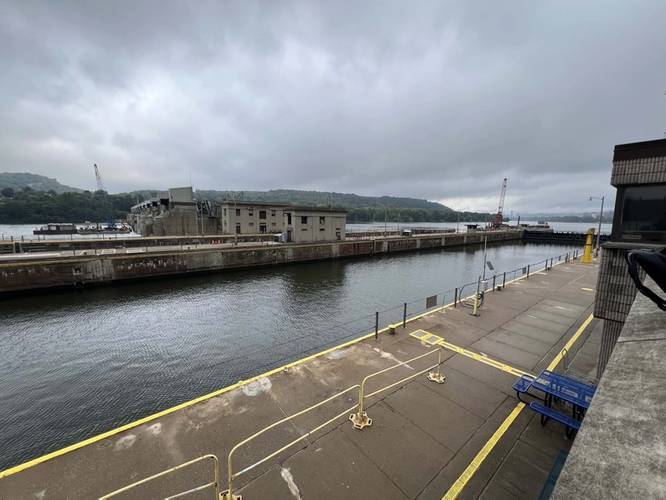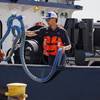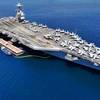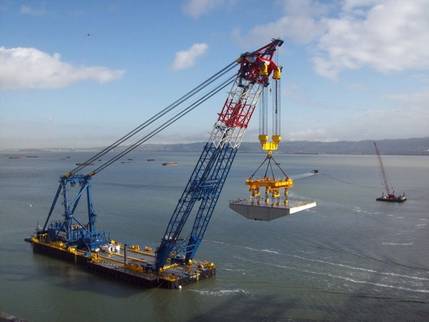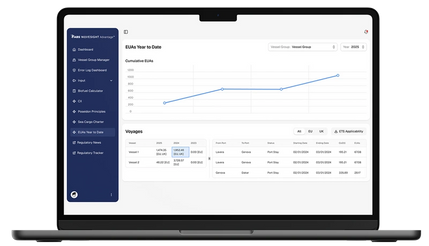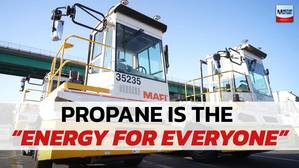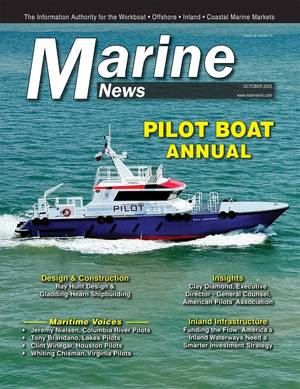Funding the Flow: America’s Inland Waterways Need a Smarter Investment Strategy
The path toward funding the U.S. Army Corp of Engineers (USACE) – and the critical inland infrastructure maintenance and construction of locks and dams that it does – is neither straight nor clear. Jen Armstrong, VP, Government Relations, Waterways Council, visited recently with Maritime Reporter TV to discuss in detail the historical context of how USACE funding has evolved in the past 50 years. A functional and efficient locks and dams system is not simply a matter of catering to inland waterway operators; rather it is a logistics imperative to fuel the U.S. economy as a whole.
Montgomery Lock & Dam Facts
AUTHORIZATION:
▪ Water Infrastructure Improvements for the Nation (WIIN) Act of 2016 (P.L. 114-322)
PROJECT SPONSOR:
▪ Inland Waterways Users/Inland Waterways Trust Fund (IWTF)
LOCATION:
• Montgomery, Emsworth and Dashields Locks and Dams
PROJECT DESCRIPTION AND BACKGROUND:
▪ A new lock chamber will be constructed at Emsworth (placed in service 1922), Dashields (1929), and Montgomery (1936)
▪ Recapitalization includes replacement of the 56- x 360-ft. long auxiliary lock chambers with new 110- x 600-ft. lock chambers at Emsworth, Dashields, and Montgomery Locks and Dams
▪ The project will return over $150m of average annual benefits to the region and the nation by passing 15-20 million tons of bulk cargo a year
▪ The project is driven by the poor structural condition of these navigation facilities
BUDGET INFORMATION:
▪ Authorized Total Project Cost (FY2016 Price Level)$3,146,116,000 *1
▪ Current Total Project Cost (FY2024 Price Level)$5,687,584,000 *2
▪ Non-Federal Sponsor Cost$0
▪ Funding Appropriated to Date$1,099,975,485 *3
Notes
*1 – Certified estimate, fully funded.
*2 – Certified estimate, fully funded. The significant increase from previous estimates is primarily driven by unprecedented inflation and risks associated with construction market uncertainty. The project will update the certified cost early 2025 to incorporate the as-award contract price.
*3 - BIL funding: $1,003,097,485 (Montgomery $961,097,485; Emsworth $42,000,000; the spend plan transferred $35M from Emsworth to Montgomery); GI (PED) Funding: $18,078,000; CG funding: $49,292,700; IWTF funding: $29,507,300.
When Jen Armstrong talks about the U.S. inland waterways system, she speaks with both passion and urgency. As Vice President of Government Relations at the Waterways Council, Inc. (WCI), Armstrong has spent much of her career at WCI navigating the complex, sometimes opaque, federal funding process that determines the fate of America’s locks and dams.
The stakes could not be higher. The 12,000 miles of commercial inland navigable waterways across the United States carry a vast share of the nation’s most essential commodities: grain and soybeans from the Midwest, petroleum products from the Gulf, and coal and aggregates from America’s heartland. Yet the system’s infrastructure is aging badly. Of the 218 locks and dams, more than 80% have exceeded their 50-year design life, with many dating back to the 1930s, ’40s, and ’50s. The results are predictable: costly delays, service interruptions, and mounting inefficiencies that ripple through the U.S. economy.
The problem isn’t a lack of need or even political support. It’s the funding process itself, a system that Armstrong describes as outdated, inconsistent, and in many ways designed to fail.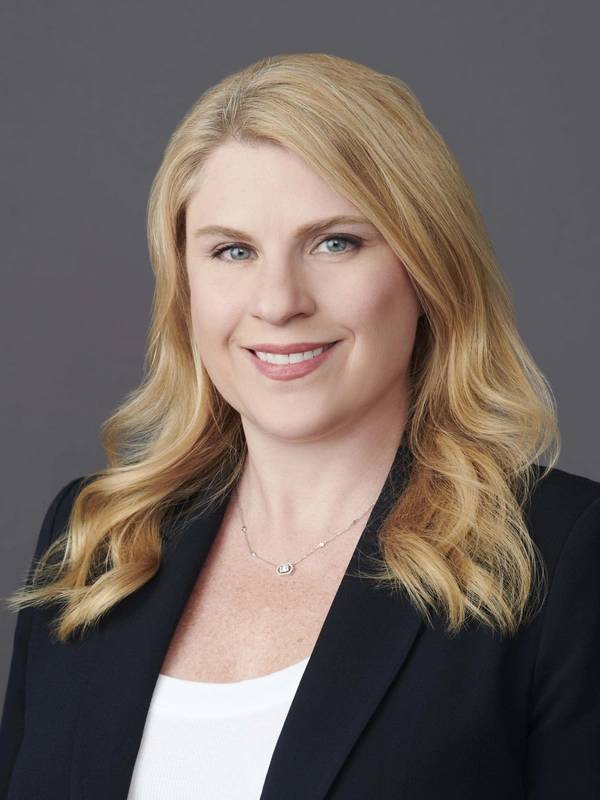 “With 42 districts operating independently, you sometimes see competition rather than coordination,” she says. “If one project advances, how does it impact another? These connections aren’t always managed at the system level. We need the Corps to think holistically, because the waterways are a connected system.”
“With 42 districts operating independently, you sometimes see competition rather than coordination,” she says. “If one project advances, how does it impact another? These connections aren’t always managed at the system level. We need the Corps to think holistically, because the waterways are a connected system.”
•Jen Armstrong, VP, Government Relations, Waterways Council.
A Career at the Crossroads of Policy and Infrastructure
Armstrong brings a unique perspective to this issue. Before joining WCI, she spent 11 years with the U.S. Army Corps of Engineers (USACE) followed by seven years with the U.S. Senate, working in both military construction and civil works. She served in emergency response after Hurricane Katrina and later in legislative affairs at Corps headquarters.
That experience gave her a front-row view of how large-scale infrastructure projects are planned, funded, and too often delayed by bureaucracy. Today, at WCI, she advocates on behalf of a broad coalition—shippers, agriculture groups, organized labor, and operators—all with a common goal: a modern, reliable inland waterway system.
Every year, the federal appropriations process begins with the President’s budget request. And every year, inland waterway projects are mostly absent from that request.
“That puts us at a disadvantage from the very start,” Armstrong said. “We rely on Congress to add back the funding—and while Congress has historically been supportive, the uncertainty makes long-term planning almost impossible.”
One key reason for this exclusion lies in the benefit-to-cost ratio (BCR) calculation, a rigid formula used by the Office of Management and Budget (OMB) to determine whether projects qualify for funding. For navigation projects, benefits are measured almost exclusively by transportation cost savings, essentially comparing the cost of moving goods by barge versus truck or rail.
“That doesn’t capture the full picture,” Armstrong stresses. “It ignores national security uses, environmental benefits, regional economic impact, and the ripple effect of delays across supply chains. The calculation is flawed, and it prevents many worthy projects from ever making the President’s budget.”
The result: multi-billion-dollar projects essential to America’s competitiveness start out underfunded and stay underfunded.
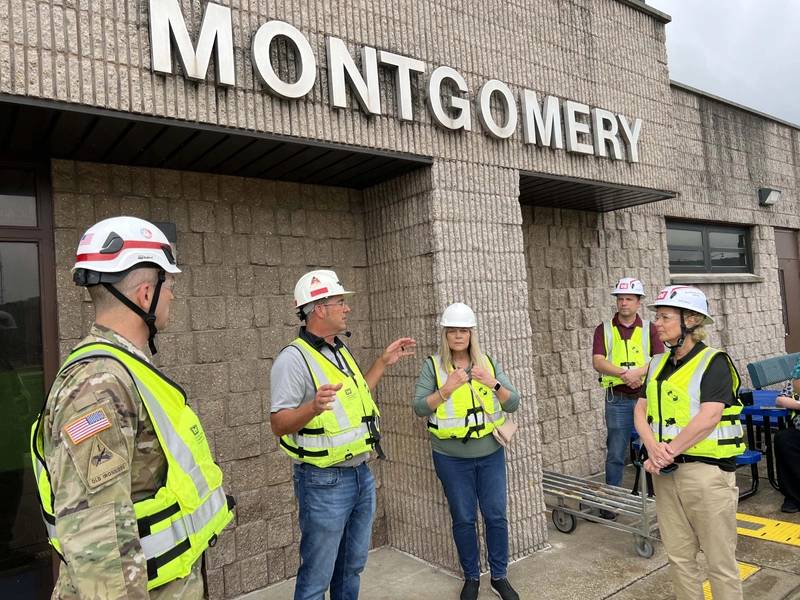 The Montgomery Lock on the Upper Ohio River outside of Pittsburgh.
The Montgomery Lock on the Upper Ohio River outside of Pittsburgh.
Copyright Greg Trauthwein
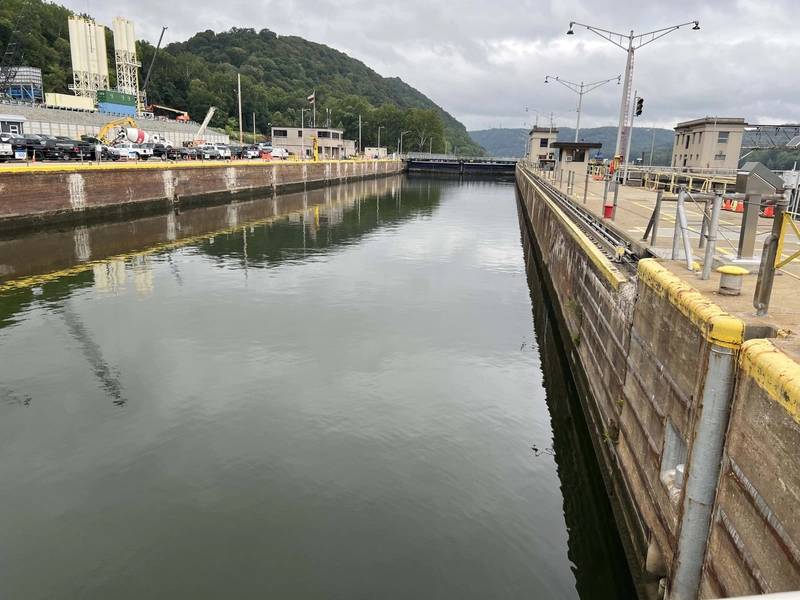 The Montgomery Lock on the Upper Ohio River outside of Pittsburgh.
The Montgomery Lock on the Upper Ohio River outside of Pittsburgh.
Copyright Greg Trauthwein
History Matters: How We Got Here
Armstrong traces today’s funding challenges back decades. During the Carter administration, skepticism about Corps projects’ environmental and economic impacts led to stricter oversight. President Reagan, while generally supportive, imposed Executive Order 12322, requiring OMB review of all new water resources projects. That gave the executive branch an enduring gatekeeping role.
Later, two changes fundamentally altered the Corps’ funding model:
•2005–2006: Congress stripped the Corps of its “continuing contract authority,” which had allowed projects to be funded over multiple years. From then on, the Corps could only spend what was appropriated annually—forcing massive projects to be built piecemeal, like constructing a house one paycheck at a time.
•2010: The earmark ban ended Congress’ practice of directing specific project funding. Instead, large pots of money were given to the administration and OMB to allocate—further entrenching executive control.
The consequences, Armstrong says, are clear: “Projects accumulate unobligated balances because the Corps lacks flexibility to reprogram funds. Then OMB turns around and says, ‘You already have money sitting unused,’ and punishes the program further. It’s a vicious cycle.”
The Match Game: Burden on Local Sponsors
Compounding the problem is the cost-share requirement introduced in 1986, which requires non-federal sponsors to cover 25–35% of project costs. While this ensures local skin in the game, it creates severe challenges for smaller communities.
“State agencies and local partners have to come up with tens or hundreds of millions of dollars; money they often can’t sit on while waiting for unpredictable federal appropriations,” Armstrong said. “If they aren’t ready with their match, they risk losing the federal dollars altogether.”
This mismatch between local budget cycles and federal appropriations not only delays projects but also discourages participation from the very partners Congress intended to empower.
Treating Waterways as a Program
Despite these challenges, Armstrong insists the Corps can make improvements without waiting for Congress. Chief among them: managing the inland waterways as a program, rather than a patchwork of district-level projects.
“With 42 districts operating independently, you sometimes see competition rather than coordination,” she says. “If one project advances, how does it impact another? These connections aren’t always managed at the system level. We need the Corps to think holistically, because the waterways are a connected system.”
A promising example comes from the Pittsburgh District, where the Montgomery Locks and Dams project has benefited from full design work and a significant upfront appropriation from the Bipartisan Infrastructure Law. “That set them up for success,” Armstrong notes. “It’s a model that shows what the Corps can do when projects are funded properly and treated strategically.”
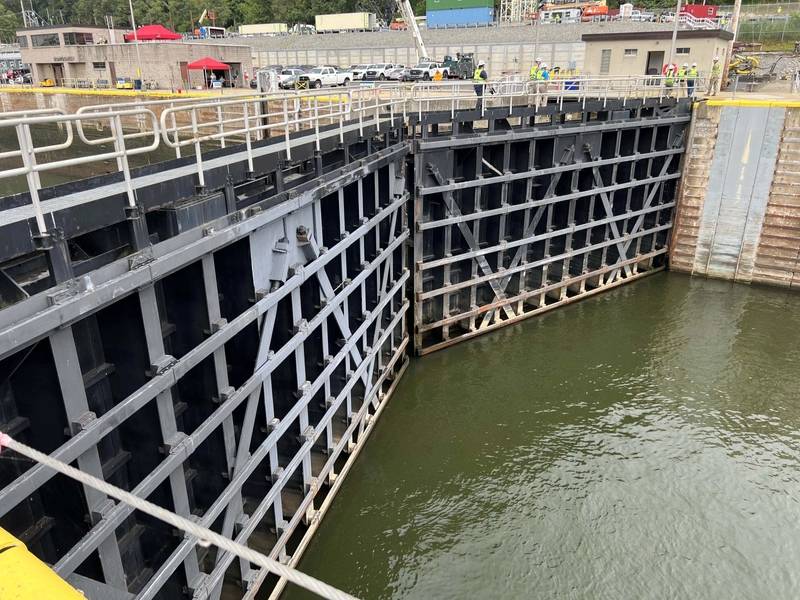 The Montgomery Lock on the Upper Ohio River outside of Pittsburgh.
The Montgomery Lock on the Upper Ohio River outside of Pittsburgh.
Copyright Greg TrauthweinCapital Investment Strategy: A Roadmap in Waiting
The Corps and industry have already developed a 20-year Capital Investment Strategy, updated every five years, that prioritizes lock and dam projects based on choke points, delays, and efficiency gains. Yet Armstrong says this roadmap is often undermined by political and bureaucratic interference.
“The industry knows where the worst bottlenecks are. The Corps has the technical expertise. Together, we’ve built a solid plan. But too often, OMB alters it before it ever reaches Congress. If everyone worked off the same page, we could see massive improvements in efficiency.”
The path forward requires both legislative reform and administrative willpower. Armstrong points to tools already available — such as early contractor involvement in design — that could reduce contingencies and cut costs. But these tools often require OMB approval, another choke point in the process.
At its core, the challenge is about predictability and transparency. Without reliable multi-year funding, projects run over budget and off schedule. Without clear communication between the Corps, Congress, and industry, trust erodes.
“Right now, too much depends on earmarks and the political muscle of individual senators and representatives,” Armstrong said. “That’s not sustainable for a system that supports the entire national economy.”
Inland Waterways are Critical Economic Arteries
The inland waterways may not capture headlines like airports or highways, but they move more than 500 million tons of cargo annually, everything from farm exports to energy supplies. Barges remain the most fuel-efficient and environmentally friendly way to move bulk goods, producing far fewer emissions than trucks or trains.
Yet none of that matters if the infrastructure fails. Each lock outage ripples through the economy, raising costs for farmers, manufacturers, and ultimately consumers.
Armstrong sums it up simply: “If the system stops, the economy stops. The solutions are there. We just need the political will to use them.”
Watch the full interview with Jen Armstrong, VP, Government Relations, Waterways Council, on Maritime Reporter TV:






